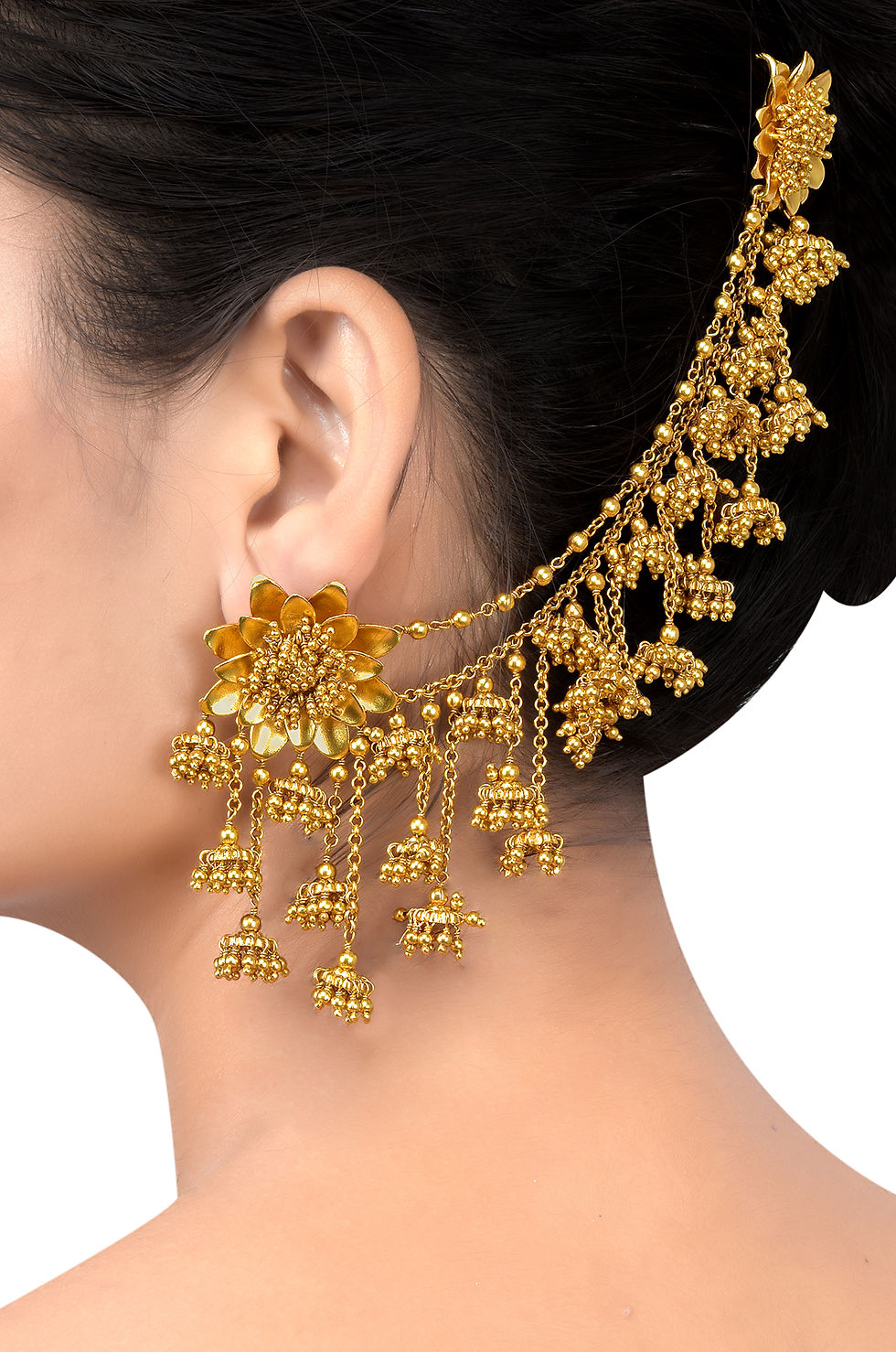The History and Significance of Traditional Jewellery
- advika
- Sep 22, 2023
- 3 min read
Jewellery is one of the oldest forms of adornment, dating back to prehistoric times. It has been worn by people of all cultures for a variety of reasons, including to enhance beauty, symbolize status, and express religious beliefs. Traditional jewellery is particularly significant, as it reflects the unique cultural heritage of a people.
History of Traditional Jewellery
The history of traditional jewellery can be traced back to the Indus Valley Civilization, which flourished in India from around 3300 to 1300 BC. Archaeological evidence suggests that the people of the Indus Valley Civilization wore a wide variety of jewellery, including necklaces, earrings, bracelets, and anklets. The jewellery was made from a variety of materials, including gold, silver, copper, and precious stones. Know more in detail Navratna Ring

Traditional jewellery has been worn in India for thousands of years. The country's rich cultural heritage and diverse religious traditions have given rise to a wide variety of traditional jewellery designs. Some of the most popular traditional Indian jewellery items include:
Mangalsutra: A sacred necklace worn by married women to symbolize their marital status.
Thali: A large, pendant necklace worn by married women in South India.
Haram: A long necklace worn by both men and women in India.
Jhumkas: Bell-shaped earrings that are popular in all parts of India.
Chandbalis: Moon-shaped earrings that are popular in North India.
Bangles: Hard, rigid bracelets that are worn on the wrists.
Kadas: Solid, bangle-style bracelets that are worn on the wrists.
Charm bracelets: Bracelets that are adorned with charms.
Anklets: Thin, delicate bracelets that are worn on the ankles.

Other notable examples of traditional jewellery from around the world include:
China: Phoenix necklace, dragon bracelet, jade ring
Japan: Kanzashi hairpin, netsuke button, obi sash
Africa: Waist bead, choker necklace, anklet
Middle East: Nose ring, armband, headpiece
Europe: Celtic cross, Claddagh ring, Scottish kilt pin
North America: Native American dreamcatcher, Navajo turquoise jewellery, Inuit bone carving
Significance of Traditional Jewellery
Traditional jewellery is significant because it reflects the unique cultural heritage of a people. It is also often used to express religious beliefs and social status. For example, in many Indian cultures, married women wear a mangalsutra, which is a sacred necklace that symbolizes their marital status. Traditional jewellery can also be passed down from generation to generation, making it a valuable heirloom that can be cherished for many years to come.
In addition to its cultural significance, traditional jewellery can also be used to express personal style. Someone might choose to wear traditional jewellery because they appreciate its beauty, because it reminds them of their cultural heritage, or because it simply makes them feel good.
How to Wear Traditional Jewellery
Traditional jewellery is usually worn in a variety of ways. You can find no cast in stone rules, but it is generally essential to consider the occasion and the other items of clothing and jewellery that you are putting on. For example, for anyone who is attending a formal event, you may choose to wear a statement piece of traditional jewelry, like a large pendant or earrings. For anyone who is attending a bit more casual event, you may choose to wear more delicate pieces of traditional jewellery, such as a simple bracelet or anklet.
It is also important to consider the other items of clothing and jewellery that you are wearing when choosing to wear traditional jewellery. For example, if you are wearing a brightly coloured outfit, you might want to choose more subdued pieces of traditional jewellery. If you are wearing a plain outfit, you might want to choose more eye-catching pieces of traditional jewellery. Know more in detail Tribe Amrapali Ghungroo Collection

Conclusion
Traditional jewellery is really a gorgeous and important method to express your cultural heritage and personal style.It is also a valuable heirloom that can be passed down from generation to generation. When selecting to wear conventional jewellery, think about the occasion and the other considerations of clothing and jewellery that you are wearing.




Comments